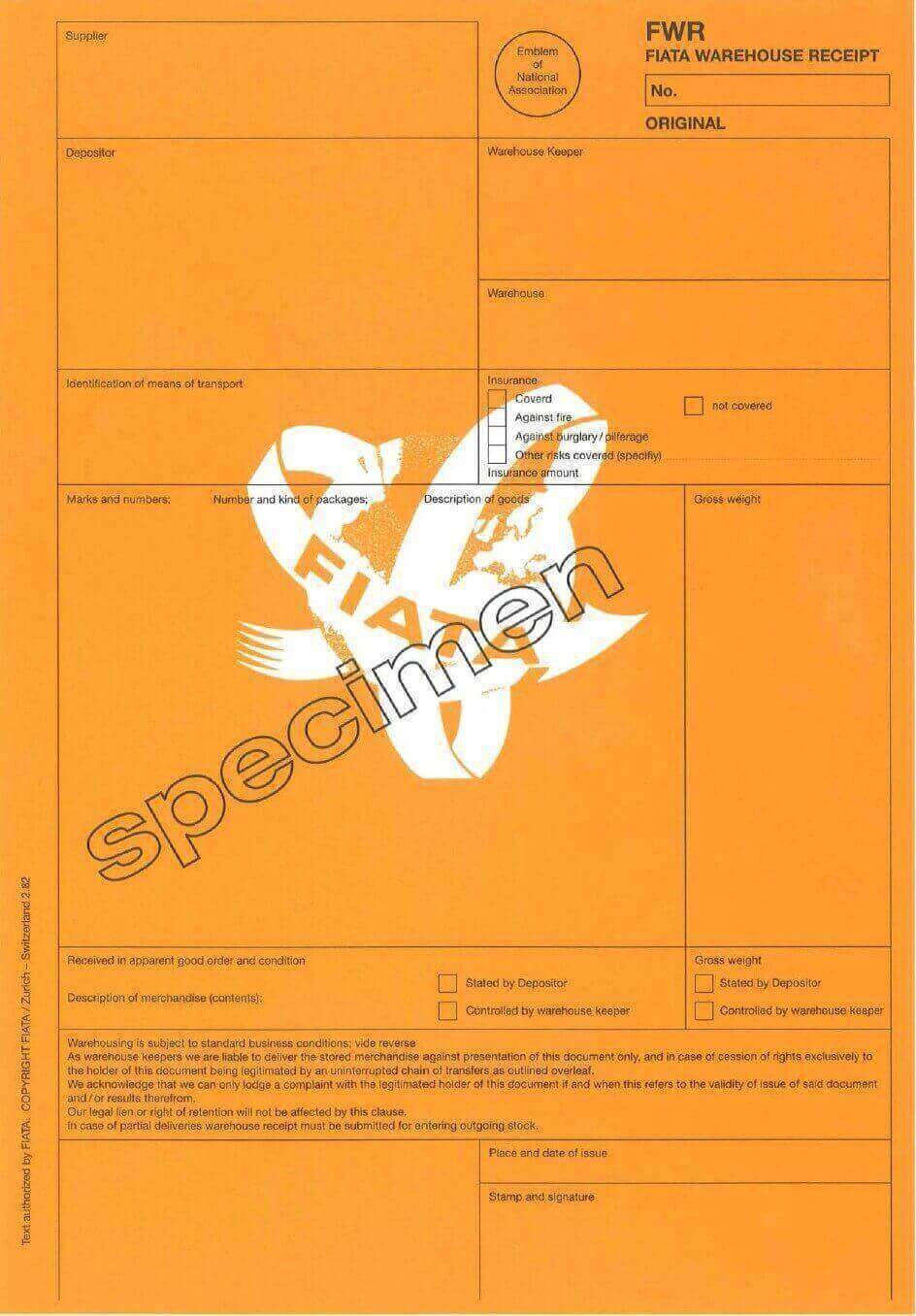On this post, I will explain Fiata Warehouse Receipt, an international trade document, only issued by freight forwarders, whom are the members of the FIATA (International Federation of Freight Forwarders Associations).
The FWR is an acronym which stands for “Fiata Warehouse Receipt”.
FWR is a standardized document format created by FIATA (International Federation of Freight Forwarders Associations) for general use in international and domestic trade.
FWR has restricted to be used only by FIATA members.
History and Usage of Fiata Warehouse Receipt
Just until a couple decades ago, freight forwarders had been providing very limited services to their clients; such as negotiating freight charges, booking cargo space and making freight consolidations.
After the globalization era, freight forwarders had been expanding their services to new areas such as providing warehousing, tracking and on time delivery services with the help of modern information and communication technology.
Freight forwarders have to issue a receipt for the merchandise they take possession when they provide warehousing services.
The FWR is a Warehouse Receipt which is a standard document for use in freight forwarders’ warehousing operations in both national and international scale.
FWR is not a contract of carriage as a result it is not a transport document unlike bill of lading, multimodal bill of lading, air waybill, road transport document or rail transport document.
Differences Between a Warrant and a Fiata Warehouse Receipt:
Warrant is a formal document that certifies or guarantees a receipt for goods that are being stored in a warehouse.
The FWR is not a “warrant” in legal means. When a warehouse keeper is requested to issue a “warrant”, the FWR cannot be utilized.
Why Exporters and Importers Use a FWR Certificate?
FWR is expected to be used in international transactions where Free Carrier (FCA) or Delivered at Terminal (DAT) trade term is chosen by exporters and importers.
According to Incoterms 2010 Rules:
- “Free Carrier” means that the seller delivers the goods to the carrier or another person nominated by the buyer at the seller’s premises or another named place.
- “Delivered at Terminal” means that the seller delivers when the goods, once unloaded from the arriving means of transport, are placed at the disposal of the buyer at a named terminal at the named port or place of destination. “Terminal” includes any place, whether covered or not, such as a quay, warehouse, container yard or road, rail or air cargo terminal.
Seller can prove to the buyer that he has already delivered goods to the buyer’s forwarder at the pre-determined warehouse by presentation of a Fiata Warehouse Receipt.
Also if the payment will be made via documentary collection or letter of credit, banks would request presentation of a FWR document.
What are the Main Characteristics of a FWR Certificate?
- FWR does not include a contract of carriage. For this reason it is not as a transport document in conventional means.
- FWR certificate is not negotiable unless otherwise indicated on the document.
- Stored goods can be delivered to the holder of the documents only against presentation of the original copy of the FWR certificate.
- Depositor should endorse the FWR document in accordance with the conditions stated under “transfer of property” heading on the back side of the certificate.
- If new owner of the goods would like to assign their delivery claim to another entity, then they should use the area titled with “cession of the delivery claim” which is placed on the back side of the certificate.
- In case of partial shipments would like to be effected, original Fiata Warehouse Receipt must be submitted to warehouse keepers in every time.
What are the Differences Between a FWR (Fiata Warehouse Receipt) and a B/L (Bill of Lading)?
Bill of Lading
- Bill of lading contains a contract of carriage between port of loading and port of discharge.
- Bill of lading can be issued in a negotiable form as shown on the below examples:
-made out to the order of the issuing bank.
-made out to order and blank endorsed. - At least one original bill of lading must be surrendered to the carrier for delivery of the goods in case bill of lading was issued in negotiable form
- Bill of lading is a transport document in regards to letter of credit rules.
- Bill of lading should show port of loading, port of discharge and shipped on board date on its face.
Fiata Warehouse Receipt
- Fiata Warehouse Receipt does not include a contract of carriage.
- Fiata Warehouse Receipt can also be issued in negotiable form but this must be identified on the face of the document.
- Fiata Warehouse Receipt is not a transport document in regards to letter of credit rules.
- Fiata Warehouse Receipt need not to state port of loading, port of discharge and shipped on board date on its face.
- Original FWR certificate copy must be surrendered to the warehouse keeper during the claim for the delivery of the goods.
- Endorsement must be made in accordance with the terms and conditions stated on the back side of the document.
